Wow! That work sounds amazing! Will check out the paper you mention.
Not a scooby! But there’s a book in the BL that’s of interest to me that presents the same problem. Is there a non-invasive way of getting at these if one were really minded? Can one x-ray them or similar?
by Matthew Steggle — Reposted by: Katherine Scheil
Fabulous new discoveries from @kscheil.bsky.social!
Reposted by: Matthew Steggle
Did you know Anne Hathaway’s epitaph is the only one in the Shakespeare family plot written on a brass plaque? Everyone else—Shakespeare, his daughter, and son-in-law—has stone slabs. We explore what that might mean on this week’s episode. www.cassidycash.com/ep386

Just seen this - a find with all sorts of elegant implications for Nashe. Bravo, Joseph Black. Lovely to see TN, who projects an air of brilliant improv, rechecking sources and writing corrections in his neatest handwriting.
www.folger.edu/blogs/collat...
www.folger.edu/blogs/collat...

Thomas Nashe's Almond for a Parrat (1590), corrected by the author | Folger Shakespeare Library
Folger Shakespeare Library is the world's largest Shakespeare collection, the ultimate resource for exploring Shakespeare and his world. Shakespeare belongs to you. His world is vast. Come explore. Jo...
www.folger.edu
Reposted by: Matthew Steggle
A plethora of new ODNB entries on early modern women stationers! Entries from Heidi Craig, Andrea Silva, Kirk Melnikoff, @mgyarn.bsky.social, Andreas P. Bassett, @tarallyons.bsky.social and @georginaemw.bsky.social, me, and of course from @valeriewayne.bsky.social who cooked up the whole cluster.
www.nybooks.com/online/2025/...
With customary precision and elegance (how does he make it look so bloody easy?) Charles Nicholl writes about Mrs Shakspaire for the New York Review of Books.
With customary precision and elegance (how does he make it look so bloody easy?) Charles Nicholl writes about Mrs Shakspaire for the New York Review of Books.
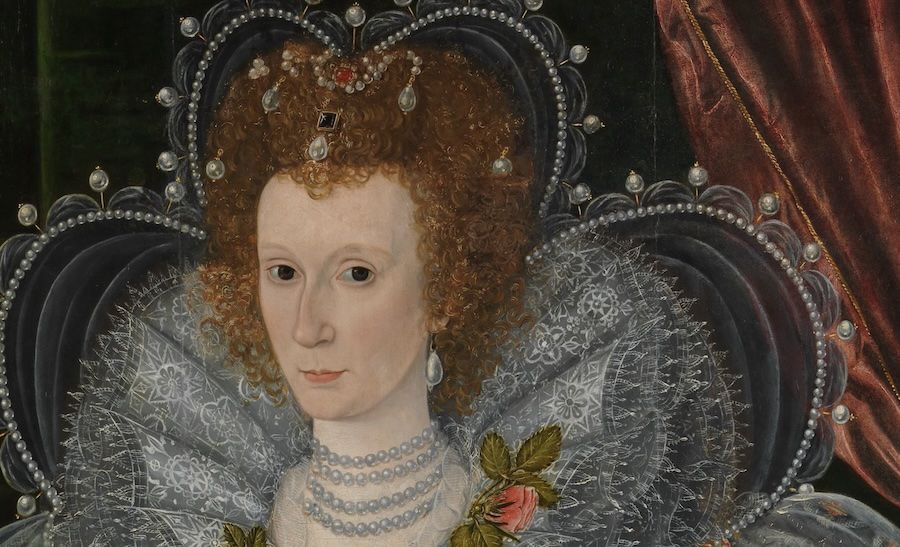
Who Is Mrs. Shakspaire? What Is She? | Charles Nicholl
On a summer’s day in 1978, Frederick Charles Morgan was at work as usual in the ancient library of Hereford Cathedral. He was a hundred years old but
www.nybooks.com
But I love even more the image of him in a frock coat, sat on the sideines at the Royal Toxophilite Society, turning the pages of this book while arrows hiss and thwack into the targets.
I love that this thing, after thirty years, can suddenly take you somewhere completely unexpected, to the worlds of Charles Dickens and Buffalo Bill. It’s great that you can read some of Zouch Troughton’s writing and hear some of his voice.
What’s more – this obit explains precisely why Haines gave him the book that’s now on my shelf.
The key is another obituary from 1889, this one from The Archer’s Register:
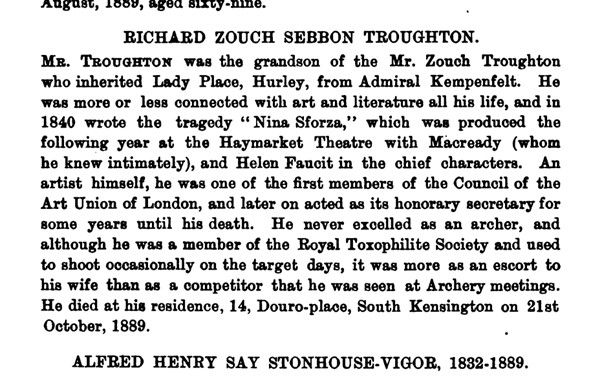
But then – double plot twist – the obituary is wrong. Gosse says he didn’t know Zouch at all, only his work, but has seen a death notice for him. Actually the notice was for Zouch’s grandfather, also called Zouch. I am more relieved by this than I should be.
But then after some hours of getting to know my new friend Zouch, I found an obituary, written by Edmund Gosse, which indicated that he had actually been dead for ten years at the point this inscription was written. www.google.co.uk/books/editio...
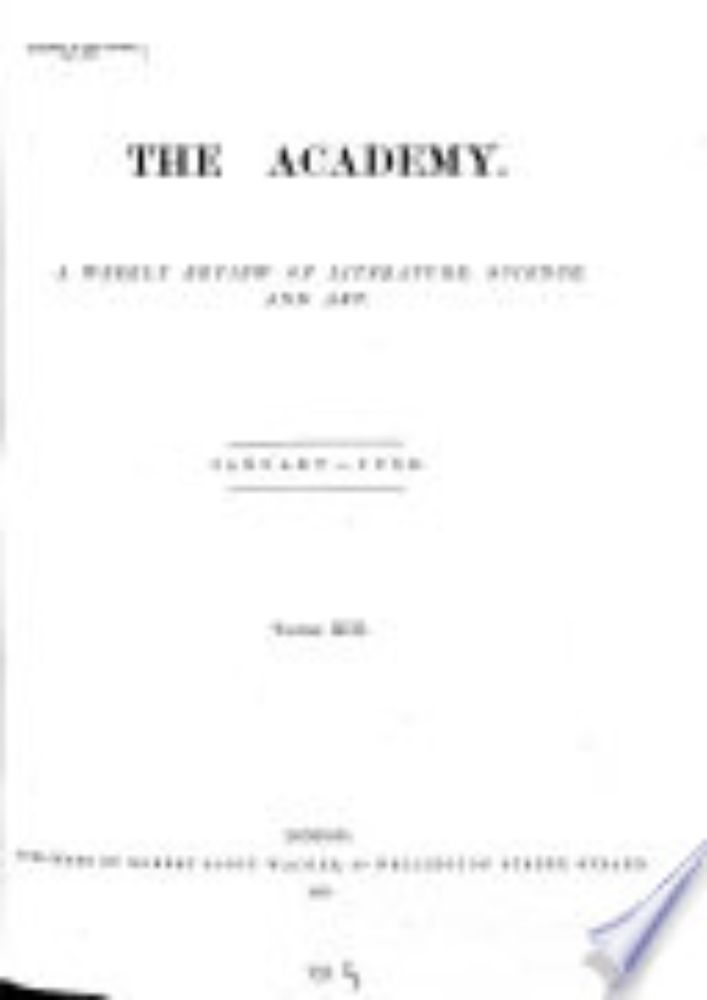
The academy
www.google.co.uk
He collected Renaissance art; he was even, briefly, a correspondent of Dickens (!) dickensletters.com/letters/rich....
The Charles Dickens Letters Project
An online resource that publishes, free of charge, all the new, unpublished correspondence of Charles Dickens that comes to light. Browse the letters of one of the most famous authors in history to le...
dickensletters.com
Google will quickly tell you a lot about a Zouch Troughton. He wrote a blank-verse tragedy, Nina Sforza (1841), acted by Helena Faucit (!), well regarded in print and on stage, and staged in 1893 by Buffalo Bill (!) as a vehicle for his girlfriend (It bombed that time).
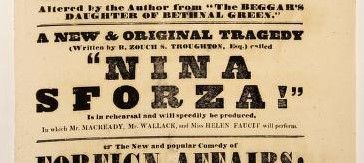
A. R. Haines’s name is a bit too common – suggestions welcome. But who on earth is Zouch Troughton? And why did Haines think he would be interested in Roger Ascham’s treatise about archery?
Thirty years and many house moves on, you find it again and start to wonder - who are these people who have been on the front endpapers all this time?
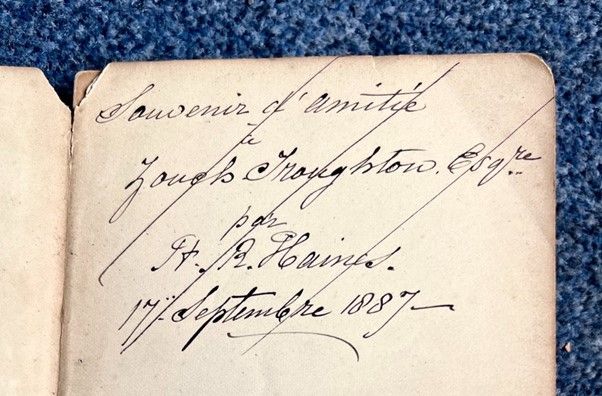
I bought this book about 1992, probably from the 50p box of some charity bookshop. It was long before you could read anything you wanted on a phone, and I was trying to build up a library of Renaissance texts, one spectacularly dog-eared book at a time. It was very Jude the Obscure. (1/11)
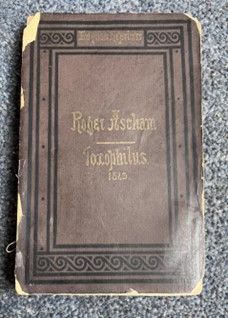
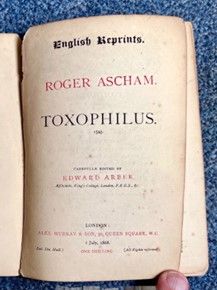
I see that picture of the cathedral is quite persuasive… and my morning has been brightened by looking at Drayton's fabulous image of Herefordshire to see what a "yarringle" even looks like.
Which looks a bit like the picture - you hold the narrow top in your hand, and then there’s an expanding cone of wool below it
- Our artist has drawn one, but it has looked really confusing and they’ve tried to turn it into a pillar
- Our artist has drawn one, but it has looked really confusing and they’ve tried to turn it into a pillar
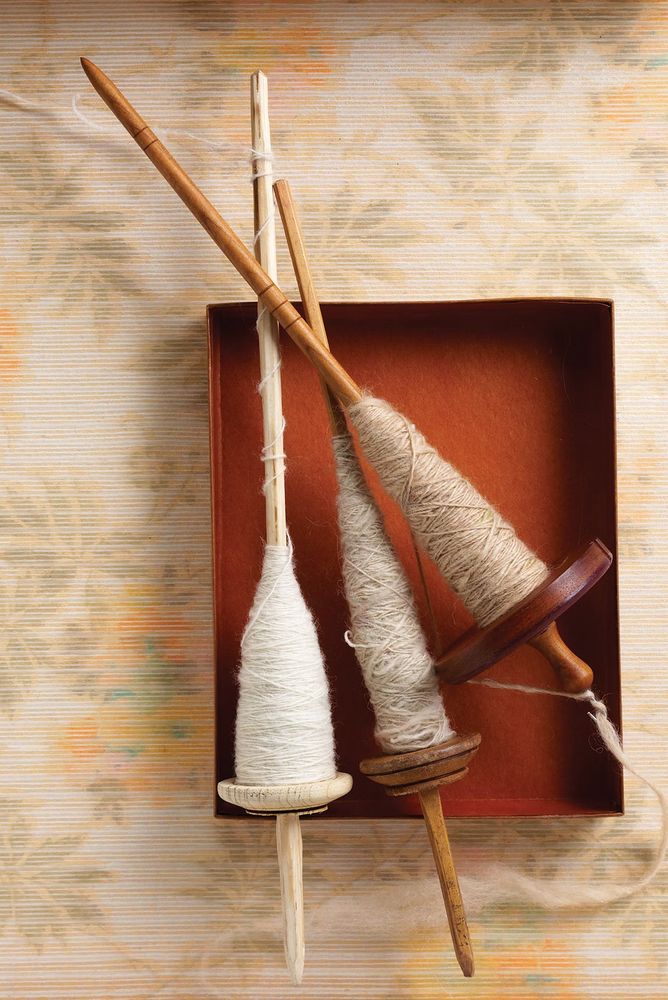
Hi Andrew! A crazy guess for your files:
- Norwich and Norfolk most famous at this date for woollen thread and cloth
- Emblematised in, for instance, Brome’s The English Moor by the drop spindle
- Norwich and Norfolk most famous at this date for woollen thread and cloth
- Emblematised in, for instance, Brome’s The English Moor by the drop spindle
Reposted by: Matthew Steggle
Here’s one for early modernists: what is Norwich holding in this 1622 map (from Drayton’s ‘Poly-Olbion’)? Yes, Norwich had a big cathedral spire, but not two (and these maps usually indicate spires in the figure’s headdress). I’ve been tossing this about, and asking experts, for months. Stuck!
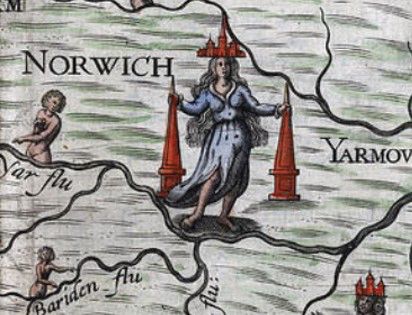
Had a lot of fun talking to Cassidy Cash www.cassidycash.com mainly about Mrs Shakspaire, with an excursion to a desert island at the end. Apologies in advance to the seagulls.
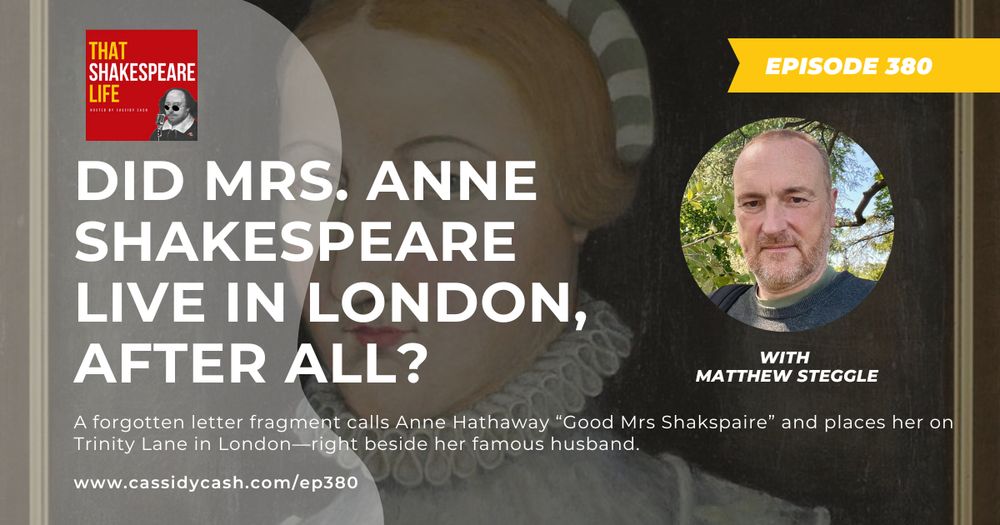
Thank you! Forthcoming again in the Oxford Works of John Marston, this time with actual receipts courtesy of - well, you probably know the scholar in question.
I have two things in the new Ben Jonson Journal! A short piece on the early reception of Marston’s Malcontent, and a review, open access, of Tom Harrison’s great new(ish) book on Jonson and the classics.
www.euppublishing.com/toc/bjj/32/1
www.euppublishing.com/toc/bjj/32/1
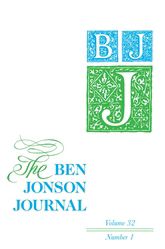
Edinburgh University Press Journals - Table of Contents - bjj: Vol 32, No 1
www.euppublishing.com
In which case, perhaps “pour” after – that’s so cool! Thank you, thank you!
A long shot, but can anyone make anything out in this bit of binding waste found in a book printed in England in 1608? I can’t even tell what language it’s in.

Stunned from prolonged exposure to ideas at #RenSoc25 today. Chairing panel 5.7 tomorrow at 9 on Adaptation and Reception: specifically Bengal, Mexico, and the inside of Thomas de Quincey’s head.
Thanks to @sixteenthcgirl.bsky.social for having me on the Not Just The Tudors podcast on Shakespeare’s Women: podfollow.com/not-just-the...

Not Just the Tudors
<p>Professor Suzannah Lipscomb talks about everything from the Aztecs to witches, Velázquez to Shakespeare, Mughal India to the Mayflower. Not, in other words, just the Tudors, but most definite...
podfollow.com
